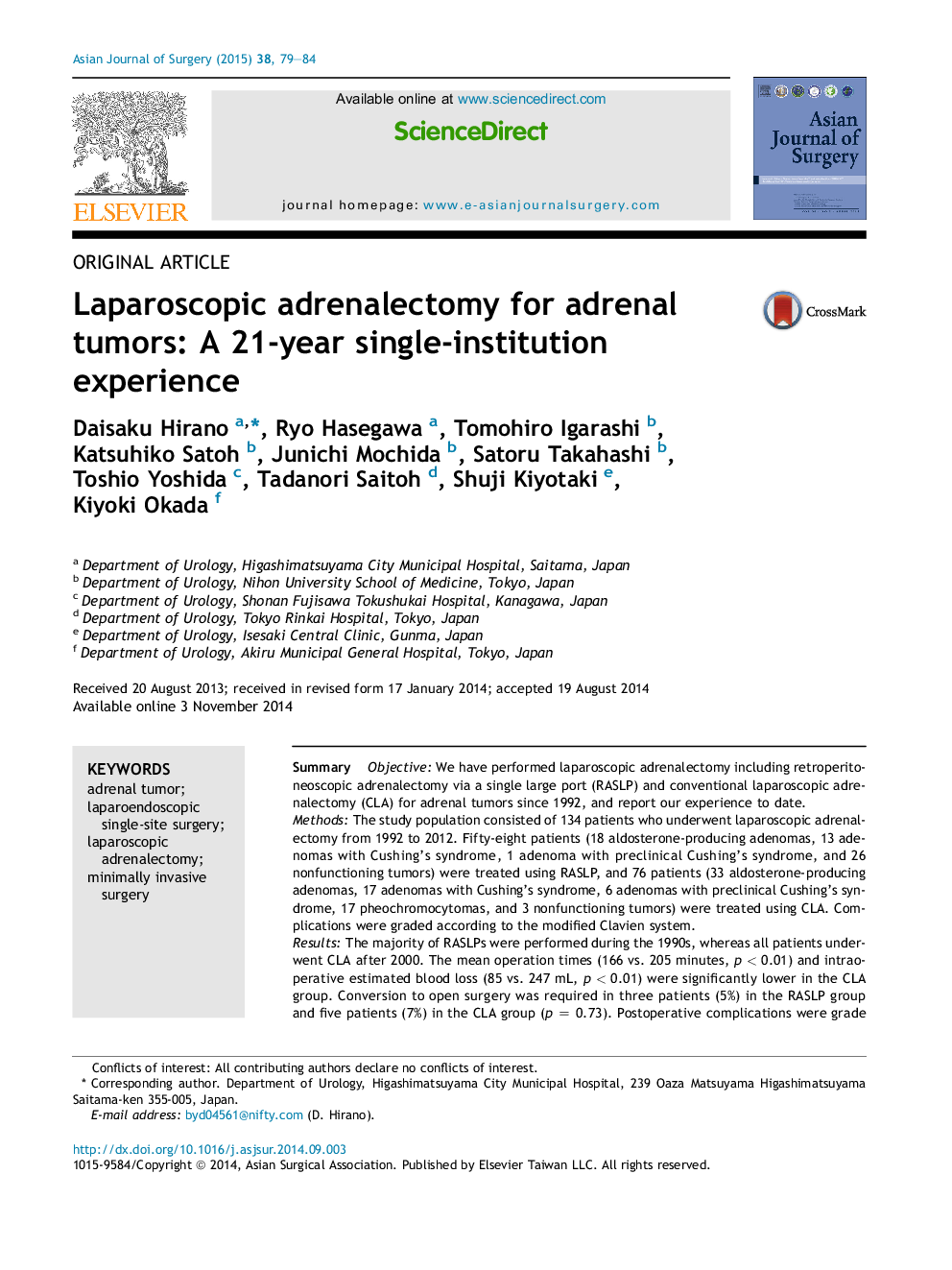| Article ID | Journal | Published Year | Pages | File Type |
|---|---|---|---|---|
| 4282725 | Asian Journal of Surgery | 2015 | 6 Pages |
SummaryObjectiveWe have performed laparoscopic adrenalectomy including retroperitoneoscopic adrenalectomy via a single large port (RASLP) and conventional laparoscopic adrenalectomy (CLA) for adrenal tumors since 1992, and report our experience to date.MethodsThe study population consisted of 134 patients who underwent laparoscopic adrenalectomy from 1992 to 2012. Fifty-eight patients (18 aldosterone-producing adenomas, 13 adenomas with Cushing's syndrome, 1 adenoma with preclinical Cushing's syndrome, and 26 nonfunctioning tumors) were treated using RASLP, and 76 patients (33 aldosterone-producing adenomas, 17 adenomas with Cushing's syndrome, 6 adenomas with preclinical Cushing's syndrome, 17 pheochromocytomas, and 3 nonfunctioning tumors) were treated using CLA. Complications were graded according to the modified Clavien system.ResultsThe majority of RASLPs were performed during the 1990s, whereas all patients underwent CLA after 2000. The mean operation times (166 vs. 205 minutes, p < 0.01) and intraoperative estimated blood loss (85 vs. 247 mL, p < 0.01) were significantly lower in the CLA group. Conversion to open surgery was required in three patients (5%) in the RASLP group and five patients (7%) in the CLA group (p = 0.73). Postoperative complications were grade 1 in three patients and grades 4 and 5 in one patient each in the RASLP group, whereas grade 2 in one patient was observed in the CLA group (p = 0.085).ConclusionAlthough this study included biases such as different eras and indications, CLA resulted in decreased operative times, blood loss, and postoperative complications compared with RASLP. CLA has so far become our preferred procedure for patients with adrenal tumor in our experience.
